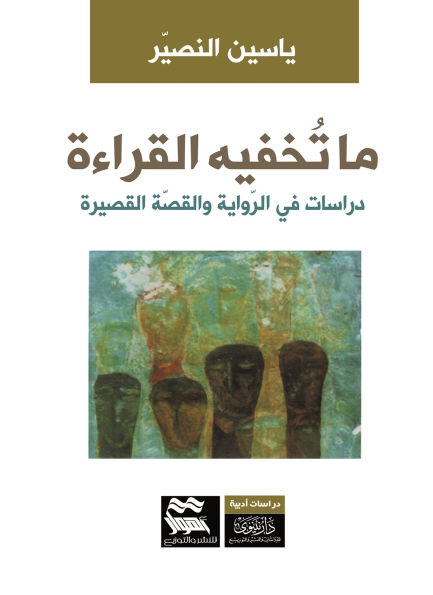What Reading Hides - Studies in the Novel and the Short Story
These articles are part of my critical project, which began in 1971 when I published a joint book with the critic Fadhel Thamer, "Contemporary Iraqi Stories." Anyone reading the critical treatments in this book will find a broad scope for the Arabic story in particular. Throughout these years, I hesitated between publishing my articles on the story after they had appeared in magazines and newspapers, and canceling the entire project, considering it already published. However, I found myself inclined to compile these articles into a book that might be of use to readers seeking to learn about both the story and the critic, especially since our current stage in criticism may not bode well, as some see it, after it was overwhelmed by the obsession with renewing the critical method. This, in critical writings, appears to the reader to be trapped in a vortex of methodological conflict, without this renewal contributing to the advancement of the story or the novel. This is in contrast to what is happening in the West, where the new critical method is a tool for developing creative output, not merely an instrument of interpretation and explanation. The Western novelist lives at the epistemological level addressed by modern critical methods, and thus there is not a significant difference between the two propositions. The critical approach does not proceed in isolation from the development of the overall structure of all societal institutions: educational, cultural, administrative, urban, and political. In the East, however, each segment develops on its own, and when it finds no scope for its applications outside its own domain, it withdraws into itself. This is what is happening with new Arab literary criticism, which has become enamored with modern approaches and whose tools have evolved in accordance with their contexts, yet without achieving any progress in creative textual development.
1147497284
What Reading Hides - Studies in the Novel and the Short Story
These articles are part of my critical project, which began in 1971 when I published a joint book with the critic Fadhel Thamer, "Contemporary Iraqi Stories." Anyone reading the critical treatments in this book will find a broad scope for the Arabic story in particular. Throughout these years, I hesitated between publishing my articles on the story after they had appeared in magazines and newspapers, and canceling the entire project, considering it already published. However, I found myself inclined to compile these articles into a book that might be of use to readers seeking to learn about both the story and the critic, especially since our current stage in criticism may not bode well, as some see it, after it was overwhelmed by the obsession with renewing the critical method. This, in critical writings, appears to the reader to be trapped in a vortex of methodological conflict, without this renewal contributing to the advancement of the story or the novel. This is in contrast to what is happening in the West, where the new critical method is a tool for developing creative output, not merely an instrument of interpretation and explanation. The Western novelist lives at the epistemological level addressed by modern critical methods, and thus there is not a significant difference between the two propositions. The critical approach does not proceed in isolation from the development of the overall structure of all societal institutions: educational, cultural, administrative, urban, and political. In the East, however, each segment develops on its own, and when it finds no scope for its applications outside its own domain, it withdraws into itself. This is what is happening with new Arab literary criticism, which has become enamored with modern approaches and whose tools have evolved in accordance with their contexts, yet without achieving any progress in creative textual development.
17.99
In Stock
5
1

What Reading Hides - Studies in the Novel and the Short Story
446
What Reading Hides - Studies in the Novel and the Short Story
446
17.99
In Stock

Product Details
| ISBN-13: | 9789933383848 |
|---|---|
| Publisher: | ??? ????? ???????? ?????? ???????? |
| Publication date: | 05/31/2025 |
| Sold by: | Bookwire |
| Format: | eBook |
| Pages: | 446 |
| File size: | 600 KB |
| Language: | Arabic |
From the B&N Reads Blog
